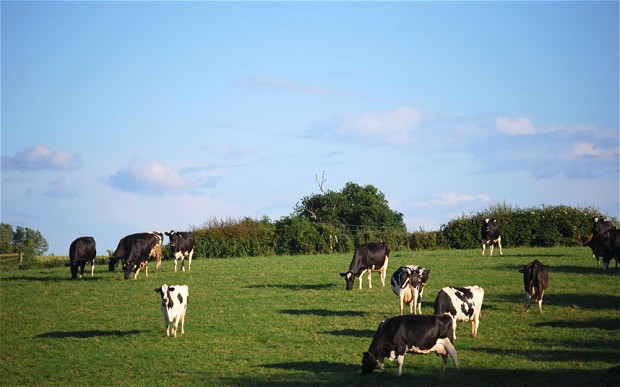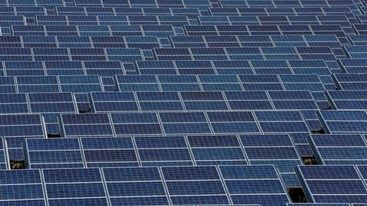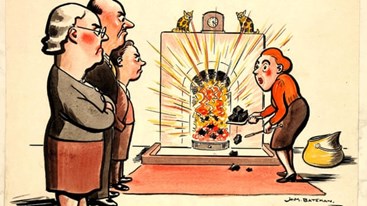Saturday, 04/05/2024 | 19:45 GMT+7
Dairy Australia has completed a thorough assessment of the impact of Smarter Energy Use on Australian Dairy Farms a nationwide project developed with funds provided from the Australian Government Department of Industry and Science Energy Efficiency Information Grants program.
Thanks to the program a total of 1399* (21%) of Australia’s dairy farms were inspected and assessors able to identify savings at the majority of premises, with the result that some businesses are now saving tens of thousands of dollars a year.
“No other agriculture sector has engaged with so many farmers to save energy, reduce costs and improve farm profitability,” said Catherine Phelps, Dairy Australia’s Natural Resource Management Program Manager.
Since Smarter Energy Use started in 2012, energy assessments were conducted in two rounds at dairy farms in all eight dairying regions and a further 930 farmers (492 from Round 1 and 438 from Round 2) were involved in workshops and field days.
“We have been able to capture information on energy use and potential savings for each individual energy assessment and these have been collated for broader analysis,” said Ms Phelps.
“The program has given us an incredibly rich source of data that is unique for the insights it provides about the energy savings that can be made in dairy,” she added.

An analysis of the energy assessment data reveals that more than half (55%) of the assessments identified on-farm savings of up to $2,000 per year. 40% of properties have the potential to save between $2,000–$10,000 annually. More substantial savings (of up to $29,000 annually) were identified for approximately 5% of assessments.
“These are significant energy and dollar savings that can make a real impact in business on-farm,” said Ms Phelps.
The most commonly identified savings were associated with:
- Improved functioning of equipment for milk cooling, including function of the plate-cooler and the compressors on the vats and using cooler water sources
- Pre-heating hot water for hot water systems, using heat exchange units (where appropriate) and using correct water temperatures
- Installing variable speed drives (VSDs) on vacuum pumps.
In addition to cutting energy costs, further dollar savings were found at some farms with electricity billing arrangements and changeover to time of use contracts."Such changes may not reduce on-farm energy use, but they can substantially reduce total energy bills," said Ms Phelps.
To understand the impact of the program further, an independent evaluation of changes in farmer knowledge, awareness and behaviour was undertaken using a sample of 192 farmers who were interviewed after having an energy assessment and receiving a plan.
Overall, the evaluation demonstrated a high level of satisfaction with 96% of respondents saying they were either fairly (55%) or very (41%) satisfied with the program.
As well as increasing awareness and knowledge of energy use on farm, 80% of farmers interviewed say they now think and/or behave differently, mainly through switching off equipment and lights when not required, increasing maintenance of equipment to ensure is operates efficiently and replacing inefficient machinery with more suitable options when it breaks down.
To gauge the depth of attitude change, 80 of the 192 farms were surveyed 12 months after having completed an energy assessment and 79% of the farmers interviewed said the energy assessment changed their attitude towards energy consumption.
“It makes you more aware of energy consumption and I actually was talking with my electrician last week and said to him that anything we do from now on, energy consumption has to be factored in. It's no use telling me to put in 3 phase power or anything like that if it is going to use more power,” said one farmer.
Truong Duy








.jpg?w=367&h=206&mode=crop) Energy efficiency and conservation usage is an important aspect of the national energy development strategy
05/03/2024
Energy efficiency and conservation usage is an important aspect of the national energy development strategy
05/03/2024
 Challenges and Opportunities to promote energy efficiency market in Vietnam
Challenges and Opportunities to promote energy efficiency market in Vietnam
 The Ministry of Industry and Trade requests government agencies to coordinate in organizing Earth Hour 2024
The Ministry of Industry and Trade requests government agencies to coordinate in organizing Earth Hour 2024
 Consultation on Energy Efficiency Boiler Catalogue and Wood Drying Guideline
Consultation on Energy Efficiency Boiler Catalogue and Wood Drying Guideline
 Son Ha Co., Ltd, applies energy efficiency and conservation measures
Son Ha Co., Ltd, applies energy efficiency and conservation measures
.png?w=367&h=206&mode=crop) Request for expression of interest - C2.1.13: Capacity Building on energy efficiency policies development
Request for expression of interest - C2.1.13: Capacity Building on energy efficiency policies development
 Phuc Kien Co., Ltd., is effectively implementing energy-saving measures
Phuc Kien Co., Ltd., is effectively implementing energy-saving measures
 Request for expression of interest - C2.1.12: Independent monitoring of safeguards implementation
Request for expression of interest - C2.1.12: Independent monitoring of safeguards implementation